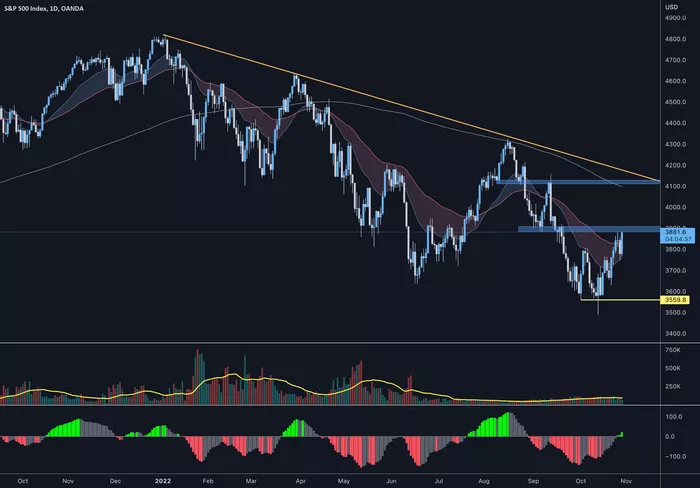In the world of stock trading and investing, there are numerous terms and acronyms that are essential for making informed decisions. One of the key terms that often comes up, especially for options traders, is IV. But what does IV mean in stocks? Understanding this concept is vital for anyone looking to get a deeper understanding of market behavior and how to navigate the often-complex world of options trading.
In this article, we will break down the meaning of IV, its importance, and how investors and traders can use it to their advantage. Whether you’re an experienced investor or someone just starting to learn about stocks and options, understanding IV can greatly improve your market strategy.
What is IV?
IV stands for Implied Volatility, and it refers to the market’s forecast of a likely movement in a stock’s price. It is a metric that reflects how much volatility the market expects from a stock or an option’s underlying asset over a certain period. IV is a forward-looking measure, and it is used primarily by options traders to estimate the potential price movement of a stock.
Implied Volatility vs. Historical Volatility
Before diving deeper into IV, it’s essential to understand the distinction between Implied Volatility and Historical Volatility:
Implied Volatility (IV): As mentioned earlier, IV is a measure of what the market expects to happen in the future. It is derived from an option’s price and reflects how volatile traders expect the underlying stock to be in the near future. It is forward-looking and can be influenced by factors such as earnings reports, geopolitical events, or news that may cause significant price movements.
Historical Volatility (HV): Historical volatility, on the other hand, is based on the past price movements of a stock or asset. It is a statistical measure that looks at the fluctuations in the asset’s price over a specific time period, such as 30 days or one year. It is backward-looking and helps to understand how much the stock has moved in the past.
While both types of volatility measure the degree of price movement, IV is specifically useful for options traders because it reflects expectations of future price changes, which directly affect the pricing of options.
How IV Affects Stock and Options Prices
IV plays a crucial role in determining the price of options, particularly in the pricing models used for options such as the Black-Scholes Model. Options are financial instruments that allow investors to buy or sell the underlying asset at a predetermined price (strike price) before a certain expiration date. The value of these options is influenced by multiple factors, and IV is one of the most important of these factors.
When IV is high, it means that the market expects greater price movement, which increases the premium (price) of options. Traders are willing to pay more for options because they anticipate that the underlying stock will experience significant volatility, which could lead to higher returns.
Conversely, low IV suggests that the market expects the stock to be relatively stable, and as a result, options premiums tend to be lower.
The Impact of Implied Volatility on Call and Put Options
Both call options (which give the buyer the right to buy an asset) and put options (which give the buyer the right to sell an asset) are influenced by IV.
Call Options: When IV increases, the price of call options tends to rise because investors expect the stock price to move upward significantly, thus increasing the potential profitability of the option.
Put Options: Similarly, when IV increases, the price of put options also tends to rise. Investors may anticipate that the stock price will fall or become more volatile, making the put option more valuable.
Understanding IV is critical for options traders because it allows them to gauge the potential profitability of a given option and whether the price of the option reflects the true market sentiment.
How to Calculate IV
Implied Volatility is not a directly observable number like historical price movements. Instead, it is calculated using an options pricing model, most commonly the Black-Scholes Model. The model considers various factors, including:
- The price of the underlying asset (stock)
- The strike price of the option
- The time until expiration (known as time value)
- The risk-free interest rate
- The current market price of the option
Given the option’s market price, the Black-Scholes model can reverse-engineer the expected volatility, which is the implied volatility. However, calculating IV manually can be complex, which is why many traders rely on financial platforms or brokerage tools that automatically provide IV values for stocks and options.
How to Interpret IV in Stock Trading
While the definition of IV is relatively straightforward, interpreting its significance in stock trading requires understanding its broader implications. Here’s how traders interpret and use IV in their strategies:
High Implied Volatility
When IV is high, it suggests that the market expects significant price movement or volatility in the future. Several factors could contribute to an increase in IV, including:
Earnings Reports: Stocks often experience higher IV before earnings announcements, as traders anticipate that earnings results could cause significant price changes.
Market Events: News of mergers, acquisitions, or regulatory changes can increase uncertainty, driving up IV.
Uncertainty in the Market: General economic conditions, political instability, or global events (like wars or pandemics) can all drive up implied volatility as traders anticipate price swings.
For traders, high IV can present both risks and opportunities:
Opportunities: Options traders may look to capitalize on high IV by buying options in anticipation of a large price movement.
Risks: However, buying options when IV is high comes with the risk of paying a higher premium. If the stock does not move as expected, traders may face significant losses due to the high price of the option.
Low Implied Volatility
When IV is low, it indicates that the market expects the stock to be relatively stable, with minimal price fluctuations in the near future. Low IV is often observed when:
A company has stable earnings and performance.
There are no major news events or catalysts in the market.
The stock is in a consolidation phase.
For options traders, low IV can offer different strategies:
Opportunities: Low IV generally means cheaper options premiums, making it attractive for traders who expect the stock to move significantly in the future.
Risks: On the other hand, selling options in low IV environments could be risky, as traders may miss out on substantial price movements if volatility increases unexpectedly.
IV Percentile and IV Rank
Traders often use the concept of IV percentile or IV rank to understand how the current IV compares to historical volatility levels.
IV Percentile: This shows where the current IV stands relative to the past 52 weeks. A high IV percentile means the current implied volatility is higher than most of the past year, while a low percentile means it is lower.
IV Rank: Similar to the percentile, IV rank compares the current IV to its range over a certain period. A high IV rank means the current volatility is high compared to historical levels, indicating that options premiums may be higher than usual.
Understanding IV percentile and IV rank allows traders to make more informed decisions when entering options trades.
How IV Affects Stock Traders
Although implied volatility is most often associated with options trading, stock traders can also benefit from understanding IV. Here’s how:
Identifying Volatile Stocks
IV can act as a gauge for stock volatility, allowing traders to identify stocks with significant price movement potential. If a stock has high IV, it may be more volatile, and stock traders might choose to trade in these stocks if they are looking for short-term price fluctuations.
Using IV to Predict Market Sentiment
IV can also reflect the overall sentiment of the market. For example, an increase in IV may signal that investors are becoming more uncertain or fearful about the stock’s future performance, potentially due to external factors or news. A decrease in IV may indicate that market participants are becoming more confident about the stock’s stability.
Conclusion
Implied Volatility (IV) is a critical concept in stock trading, especially for options traders. It provides valuable insight into market expectations and stock price movements, helping traders to gauge potential opportunities and risks. By understanding IV and its effects on options pricing, traders can make more informed decisions and develop strategies that align with the market’s anticipated volatility.
Whether you’re a seasoned options trader or a stock investor looking to expand your knowledge, understanding IV is essential for navigating the complexities of the market. It can offer useful insights into stock price movements, and when used effectively, it can significantly enhance your trading strategy.
Related topics:

































